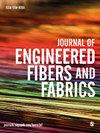Effects of step-by-step line balancing in apparel assembly line
IF 2.3
4区 工程技术
Q1 MATERIALS SCIENCE, TEXTILES
引用次数: 0
Abstract
The mixed work assignment technique was applied to the modular production concept to solve the apparel assembly line balancing problem. Specifically, an algorithm was implemented to generate workstations by first classifying tasks into modules through an analysis of the manufacturing process and assigning grouped tasks in the single task–multiple workers and multiple tasks–single worker assignment methods. Then, worker assignment was sequentially performed considering the skill level of the worker. A simulation of producing 100 men’s shirts was performed. Owing to line balancing, the total production time was considerably lower than that reported in previous studies. The enhanced performance was attributable to the fact that unlike previous studies that limited the apparel assembly line balancing problem to worker assignment, line balancing was performed through both task and worker assignment in this study. The results demonstrated that task assignment must be considered in the design stage in the apparel assembly line balancing problem.分步线平衡在服装流水线中的作用
将混合工作分配技术应用于模块化生产理念,解决服装装配线的平衡问题。具体而言,通过对制造过程的分析,首先将任务划分为模块,并以单任务-多工人和多任务-单工人分配方法分配分组任务,实现了生成工作站的算法。然后,考虑工人的技能水平,依次进行工人分配。模拟生产了100件男式衬衫。由于生产线平衡,总生产时间大大低于以往研究报告。与以往研究将服装装配线平衡问题局限于工人分配不同,本研究通过任务分配和工人分配来实现生产线平衡。研究结果表明,服装装配线平衡问题在设计阶段必须考虑任务分配问题。
本文章由计算机程序翻译,如有差异,请以英文原文为准。
求助全文
约1分钟内获得全文
求助全文
来源期刊

Journal of Engineered Fibers and Fabrics
工程技术-材料科学:纺织
CiteScore
5.00
自引率
6.90%
发文量
41
审稿时长
4 months
期刊介绍:
Journal of Engineered Fibers and Fabrics is a peer-reviewed, open access journal which aims to facilitate the rapid and wide dissemination of research in the engineering of textiles, clothing and fiber based structures.
 求助内容:
求助内容: 应助结果提醒方式:
应助结果提醒方式:


